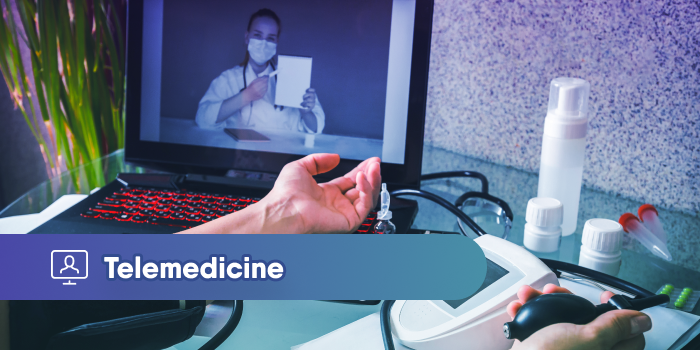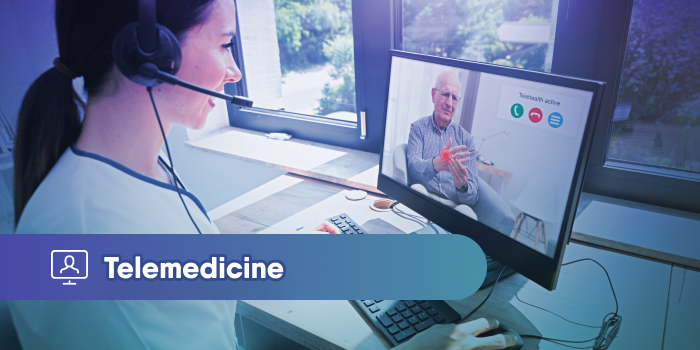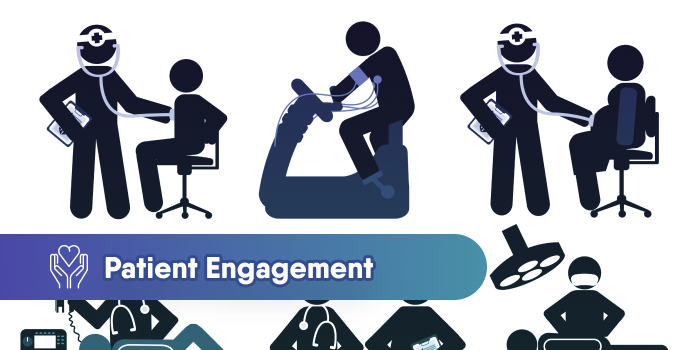How Telehealth Improves the Patient Experience
Healthcare professionals (HCPs) have long sought and struggled to assess and improve healthcare quality in the United States. The Agency for...
4 min read
Paul Dumayac : 4/6/22 7:00 AM

Telemedicine, as a remote patient care model, is not a new practice in healthcare and existed for many years before the COVID-19 pandemic. It was only until the coronavirus outbreak that telemedicine became hugely popular and widely accepted. As more people embrace telemedicine, it continues to evolve and further impact the healthcare industry.
One significant impact of telemedicine is how it transforms the patient-doctor relationship in a positive manner.
The Health Resources and Services Administration of the U.S. Department of Health and Human Services defines telemedicine as the use of telecommunications and electronic information technologies that aim to promote long-distance health care, public health administration, and patient and professional health-related education.
The technologies include the Internet, streaming media, store-and-forward imaging, video conferencing, terrestrial and wireless communications, and mobile technology.
Studies show telemedicine as an equally effective replacement for in-person visits in diagnosing and managing specific medical conditions, such as acute childhood illness, minor injuries, and respiratory problems, as early detection of COVID-19 infection. The pandemic has helped demonstrate how telemedicine is a practical option for on-demand healthcare and accelerated a broader reach throughout the country.
Experts maintain the irreplaceable value and effectiveness of a doctor’s actual touch. Telemedicine extends this touch as a practical option for patients to access and receive care. The Centers for Disease Control (CDC), for example, outlines potential uses of remote access to healthcare at times when an in-person visit is not practical or feasible, such as via telemedicine:
The rapid growth of people adopting telemedicine services results from advancements in technology and how health care providers (HCPs) deliver successful healthcare outcomes.
Such growth transforms the patient-doctor relationship for the better — more on that below.
Let's dive in quickly first on how the patient-doctor relationship works.
According to the Code of Medical Ethics, a patient-doctor relationship exists when a physician attends to a patient's medical needs. Communication, engagement, and education establish the nature of the bond, and it further grows on the trust and loyalty developed in the process.
Studies indicate that the kind of a patient-doctor bond influences patient outcomes. The relationship happens when a patient sees a doctor and complains of certain health conditions. The doctor then evaluates symptoms, discusses diagnoses, explains treatment options, acquires consent, and provides care until recovery or until the patient finds another doctor.
However, there is more to the patient-doctor relationship than its contractual portrayal above. Sometimes, a patient reveals more than symptoms, such as fears or actions they would not share with anyone else. Moreover, patients also help doctors discuss, plan, and implement quality care based on their understanding and belief of what suits them perfectly.
The trust that develops in a patient-doctor relationship helps in the recovery and well-being of patients. Throughout the ages, this relationship leaned toward being provider-centered, where the healthcare system depended primarily on the physician's perspective.
In recent years, though, the patient-doctor relationship has evolved. It now considers the value and pivotal role patients play in healthcare. Patients and doctors now work as partners in care management: the patient-centered care model. It is an approach where physicians enter the world of patients and gain more of their perspectives.
The development of a patient-centered model opens doors for medical practices to adapt to how patients view and control their lives. Telemedicine helps transform the patient-doctor relationship to provide quality care, high patient satisfaction, save costs, and increase communication.
Firstly, with the increase of telemedicine adoption, the patient-doctor relationship evolves into a more closely connected partnership despite the distance.
Secondly, the relationship is more intimate even when encounters are remote and virtual.
Thirdly, with telemedicine, patients and doctors are more engaged in care management, even when only texting and not even in real-time situations.
The following facilitate this positive transformation of the patient-doctor relationship:
Telemedicine offers several options to provide patient care, from text messaging to video conferencing. Telemedicine also allows HCPs to automate customized and personalized reminder messages to patients to encourage active participation in managing their condition.
With telemedicine, patients feel that they can easily access their healthcare providers and communicate with them, regardless of physical distance. Information technology advancements make it possible to deliver patient care without borders or barriers.
The cost of an in-person visit for a patient includes more than a co-pay — transportation, time spent in traffic, childcare, and missed work, are all potential costs they incur. With virtual visits, where they stay at home or work or wherever they are at that moment, patients avoid the added costs of receiving care, saving them money.
Telemedicine makes receiving healthcare for patients convenient by allowing them to book and see their doctors in the comfort of any location at their preferred time. Having to take time off from work, for example, to visit their doctor's clinic, is now history with virtual telemedicine visits. Patients also receive the desired care without the hassle of in-office wait times or unpredictable travel time to the office.
By allowing patients to communicate with medical practices by simply texting, telemedicine dramatically reduces phone call volume and increases staff productivity. Telemedicine platforms, such as Curogram, demonstrate how this implementation, which allows patients to book, cancel, and reschedule appointments by texting, also reduces patient no-shows.
With telemedicine, doctors monitor a patient's medical condition at a distance. The valuable medical data healthcare providers receive from the patient, even remotely, allows them to keep a close eye on a patient's condition and quickly adjust the treatment when necessary.
It is not the contradiction between patient care development and the growing physical distance between patients and doctors that telemedicine transforms the patient-doctor relationship. It is the bridge that it serves between them that nurtures their developing and evolving relationship.
Telemedicine accelerates the wide acceptance and implementation of the patient-centric care model. It is a health care model that encourages the active participation of patients in the management of their health conditions. It promotes collaboration between HCPs and patients in their diagnosis, treatment, and recovery.
With patients gaining more control of their healthcare, the patient-doctor relationship must steer further towards a patient-centric approach — telemedicine is the key to this transformation.

Healthcare professionals (HCPs) have long sought and struggled to assess and improve healthcare quality in the United States. The Agency for...

Telehealth enables patients to be more engaged with their healthcare providers as it provides them easier access and greater convenience to care.

Relevant patient education, effective patient and office communication, constant monitoring and response to feedback, patient-family engagement, and...